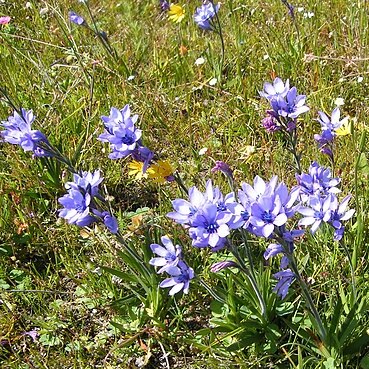A small herb that keeps growing from year to year. It has a corm. It grows 20 cm high and spreads 15 cm wide. The stem is erect. The leaves are stiff and sword shaped. They are hairy and ribbed. The flowers are funnel shaped and have 6 petals. They can be lilac to red.
Cormous geophyte, 7-20 cm. Leaves lanceolate, hairy. Flowers zygomorphic, violet to pale blue, marked with yellow, fragrant, inner bracts divided to base, ovary hairy.

